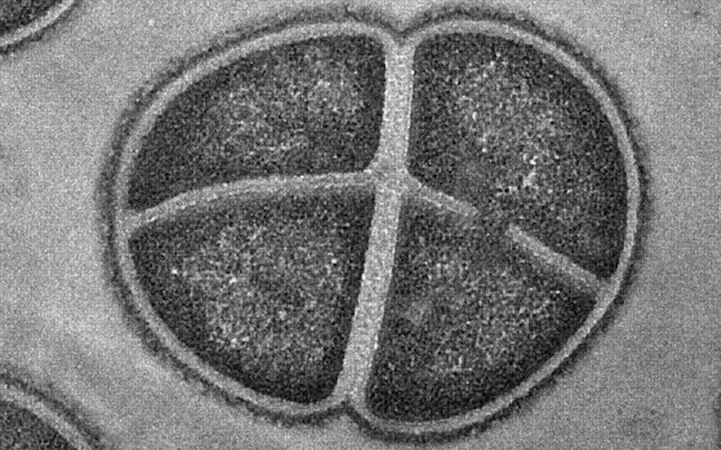
Unveiling the Hidden Power of Deinococcus Bacteria: The Future of Microbial Pigments
2024-09-23
Author: Yu
Introduction
Deinococcus bacteria, renowned for their incredible resilience against extreme conditions such as high radiation, extreme temperatures, and desiccation, harness the power of unique pigments—particularly carotenoids—to thrive in such environments. These pigments not only enable survival but also play a pivotal role in the bacteria's ability to combat oxidative stress caused by radiation.
Advancements in Metabolic Engineering
Recent advancements in metabolic engineering and synthetic biology present a promising avenue for enhancing the yield of these natural pigments, despite their limited variety in nature. By employing gene editing techniques and optimizing culture conditions, scientists aim to expand the industrial potential of these pigments, opening up new applications in various sectors.
Biosynthetic Pathways and Key Discoveries
Key investigations into the biosynthetic pathways of these pigments have revealed crucial enzymes and genes involved in their production. Notably, research has spotlighted deinoxanthin, a prominent pigment in Deinococcus radiodurans, which exhibits remarkable antioxidant properties and is critical for the bacteria's radiation resistance. This pigment's ability to mitigate damage from harmful radiation is particularly exciting for fields that prioritize safety in extreme environments.
Future Applications
Looking ahead, the implications of harnessing pigments from Deinococcus bacteria are far-reaching. There are prospects for their application in the food industry as natural colorants and antioxidants, in pharmaceuticals for producing drugs with enhanced stability, and even in space exploration, where these pigments could serve dual functions as radiation indicators and health protectants for astronauts embarking on lengthy missions.
Conclusion
As researchers delve deeper into the intricate relationship between these microbes and their pigments, we stand on the brink of unlocking innovative solutions for some of humanity's most pressing challenges. Could the key to thriving beyond Earth lie within the pigments of these remarkable bacteria? Only time will tell!


 Brasil (PT)
Brasil (PT)
 Canada (EN)
Canada (EN)
 Chile (ES)
Chile (ES)
 Česko (CS)
Česko (CS)
 대한민국 (KO)
대한민국 (KO)
 España (ES)
España (ES)
 France (FR)
France (FR)
 Hong Kong (EN)
Hong Kong (EN)
 Italia (IT)
Italia (IT)
 日本 (JA)
日本 (JA)
 Magyarország (HU)
Magyarország (HU)
 Norge (NO)
Norge (NO)
 Polska (PL)
Polska (PL)
 Schweiz (DE)
Schweiz (DE)
 Singapore (EN)
Singapore (EN)
 Sverige (SV)
Sverige (SV)
 Suomi (FI)
Suomi (FI)
 Türkiye (TR)
Türkiye (TR)
 الإمارات العربية المتحدة (AR)
الإمارات العربية المتحدة (AR)